I'm trying to code in such a way as to take advantage of scripting, as I regularly get output in this format and having to copy/paste it in Excel one by one is a real chore. However, I'm stuck when it comes to implementing the functions.
So, my data is in the following form:
Condition Sample1 Sample2 .... Sample n
T1 6.99 5.80 .... n_1
T2 2.05 3.04 .... n_1
T3 4.50 4.69 .... n_1
T4 4.71 5.22 .... n_1
T5 5.66 3.65 .... n_1
T6 9.76 2.89 .... n_1
I need to apply the following equation:  , where x is the individual entry and n is a coefficient, such that the full equation looks something like this:
, where x is the individual entry and n is a coefficient, such that the full equation looks something like this:
 .
.
Basically, per column, I need to consider each element in sequence and multiply it by a sequential coefficient (odd numbers from 1: length Condition) to get the answer S, for each Sample. The size of my dataset will not change - it will always be T1:T6, what will change is Sample 1...n. Ideally the value of S will be appended at the bottom of the column, or saved in a separate dataset with reference to the sample that it belongs to.
I've tried a number of solutions, including transposing, but can't seem to wrap my head around it.
My current attempt at implementing a simpler function on a portion of the dataset yielded no success.
for (i in 2:8){dT[7,i] <-
((1*dT[1,i])+(3*dT[2,i])+(5*dT[3,i])+(7*dT[4,i])+(9*dT[5,i]))+(11*dT[6,i])
}
I think the right solution involves some kind of *apply but I'm completely clueless as to how to use those properly.
EDIT: Adding a reproducible example:
N Condition Sample A Sample B Sample C Sample D
1 T1 91.323 78.758 70.298 66.765
3 T2 -3.737 -1.5 -7.744 -9.247
5 T3 5.205 4.533 2.284 2.178
7 T4 -0.486 -0.068 -1.386 -0.927
9 T5 0.337 -0.139 0.087 0.055
S -0.046296296 -0.123654391 0.394039047 0.445258425